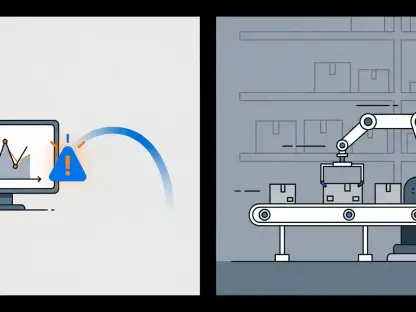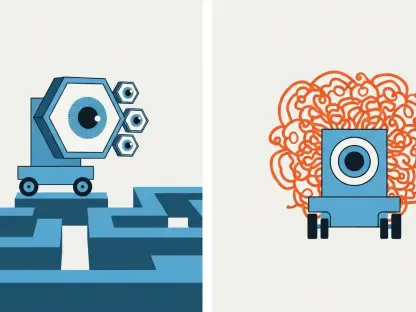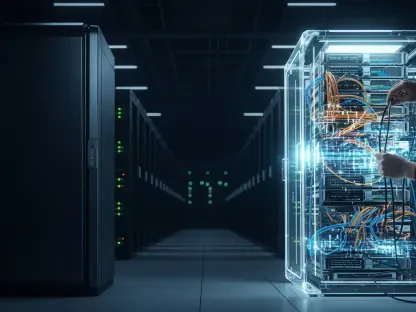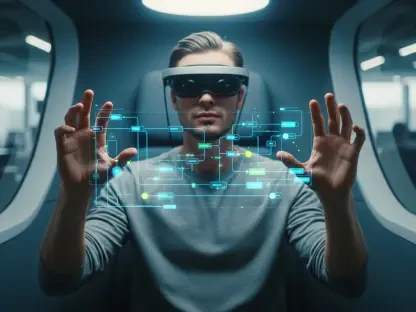What if a machine could gaze at a vibrant park scene and not just label the trees and people, but feel the essence of children laughing or the calm of a sunny afternoon? This tantalizing possibility drives a cutting-edge exploration into whether artificial intelligence can mirror the intricate way the human brain perceives visual environments. Groundbreaking research is peeling back layers of both technology and neuroscience, revealing stunning similarities between how machines process data and how human minds interpret the world around them.
Why This Discovery Shakes Up Tech and Science
The significance of aligning AI with human visual perception extends far beyond laboratory walls. In a time when AI powers everything from navigation systems to healthcare tools, matching machine vision to human understanding could transform lives. Consider the potential for aiding the visually impaired with devices that describe surroundings with emotional and contextual depth, or enhancing safety in autonomous vehicles through nuanced scene interpretation. This intersection of AI and brain science raises profound questions about the boundaries of technology and the ethical dimensions of mimicking human thought processes.
Peering Into the Brain: AI’s Surprising Parallels
At the core of this research lies a fascinating comparison between large language models (LLMs) and human brain activity. These models, often used for text analysis, generate numerical representations of scene descriptions—think of a busy marketplace or a serene lakeside—that align closely with brain patterns observed through MRI scans. This correlation suggests that AI can encode meaning in a manner strikingly similar to human cognition, capturing the essence of a visual moment rather than just cataloging its parts.
Delving deeper, this approach marks a departure from traditional AI vision systems that focus solely on object identification. LLMs grasp the relationships and context within a scene, akin to how the brain weaves together a narrative from visual input. For instance, recognizing a family gathering involves more than spotting individuals; it’s about sensing the warmth and connection, a feat AI is beginning to emulate with startling accuracy.
Remarkably, neural networks trained on these language-based representations have outperformed many leading vision models in predicting brain responses, even with less training data. This efficiency points to a powerful synergy between language and visual processing, hinting at a future where AI might interpret the world with a depth previously thought exclusive to human minds.
Experts Weigh In: A Glimpse Behind the Research
Insights from the minds driving this study add a compelling layer to these findings. Associate Professor Ian Charest from Université de Montréal, a key figure in the research, describes the semantic representations of LLMs as “a vital link between the abstract concepts in human thought and the concrete data in machines.” This perspective highlights the innovative bridge being built between two seemingly disparate fields.
Adding to this, first author Professor Adrien Doerig from Freie Universität Berlin emphasizes the broader implications: “Finding that brain activity mirrors how language models process descriptions suggests a fundamental unity in how meaning is constructed.” Such statements from leading researchers, backed by collaboration across global institutions like the University of Osnabrück and the University of Minnesota, lend weight to the idea that this work could redefine understanding of both AI and human cognition.
Real-World Impact: Turning Theory Into Action
The practical applications of this research are as exciting as the science itself. One promising avenue is the development of assistive technologies for the visually impaired. By integrating language-vision models, engineers could design tools that go beyond naming objects to conveying the mood or context of a setting, like describing a bustling café with its lively chatter, thereby enriching user experience.
Another critical area is autonomous systems, particularly in transportation. Training self-driving cars with these advanced representations could enable them to interpret complex urban scenes—such as a crowded crosswalk with erratic pedestrian movement—with a human-like grasp of context, prioritizing safety over mere detection. This shift could significantly reduce accidents caused by misinterpretation of dynamic environments.
Lastly, the realm of brain-computer interfaces stands to gain immensely. Building on these findings, scientists could refine methods to translate visual thoughts directly from brain activity into actionable data, using LLMs as predictive frameworks. Initial steps might involve targeted experiments mapping specific visual scenarios to neural responses, paving the way for revolutionary communication tools for those with severe impairments.
Looking Ahead: Shaping the Future of AI Vision
Reflecting on this journey, the strides made in aligning AI with human visual perception have opened new horizons in technology and neuroscience. The demonstrated parallels between machine models and brain activity have sparked a wave of innovation that reshaped assistive devices, autonomous navigation, and neural decoding. Moving forward, the challenge lies in scaling these insights—refining algorithms to handle diverse real-world scenarios and ensuring ethical guidelines keep pace with rapid advancements. As efforts continue from 2025 onward, the focus must remain on harnessing this potential to enhance human capability, ensuring that AI serves as a partner in perceiving and navigating an ever-complex world.









